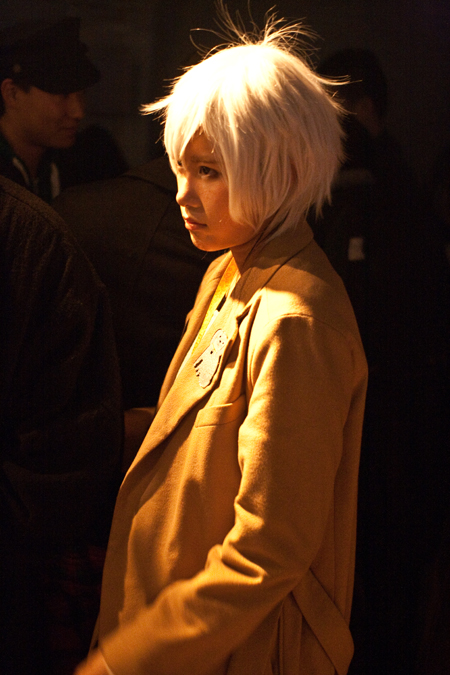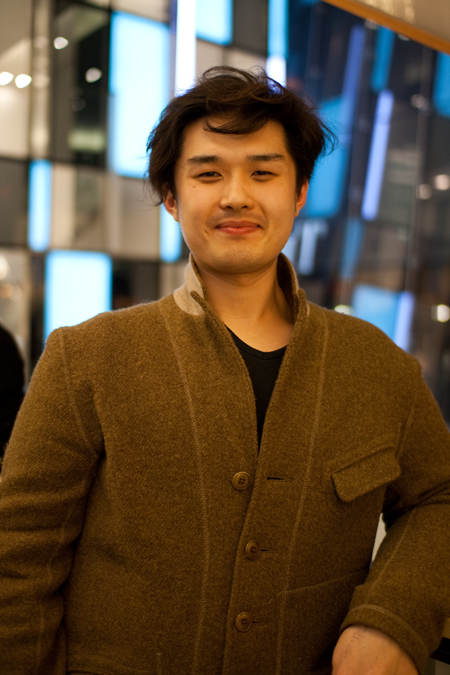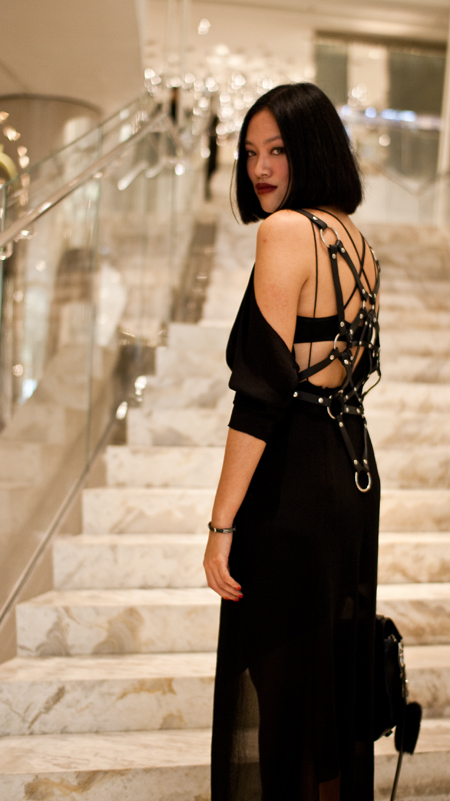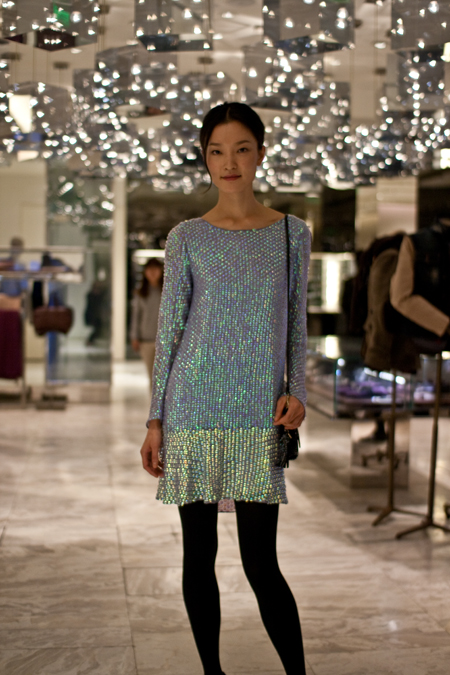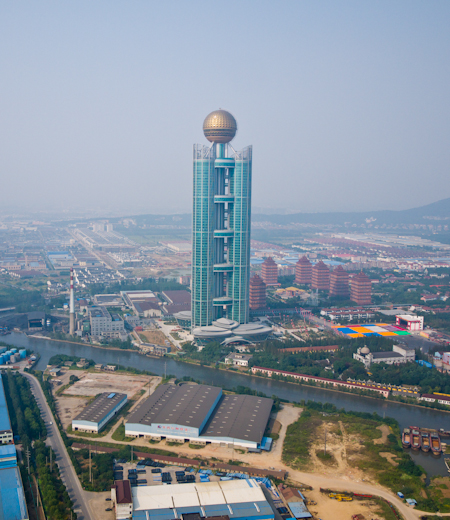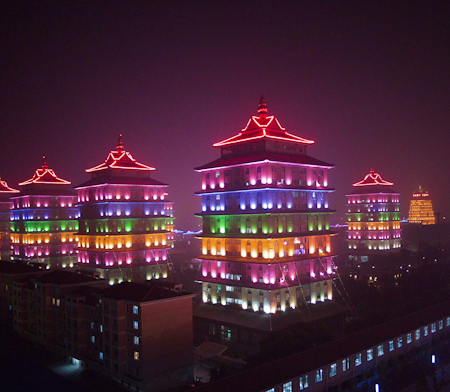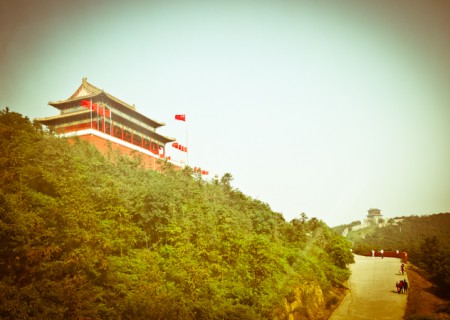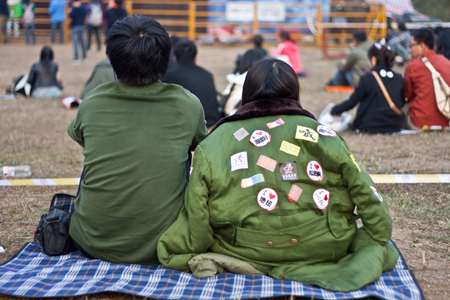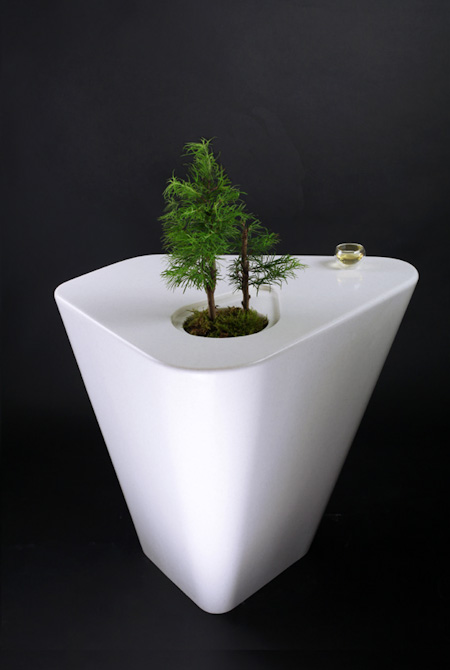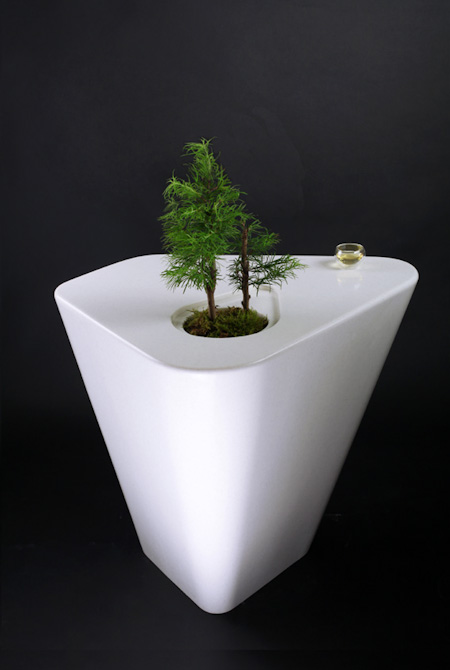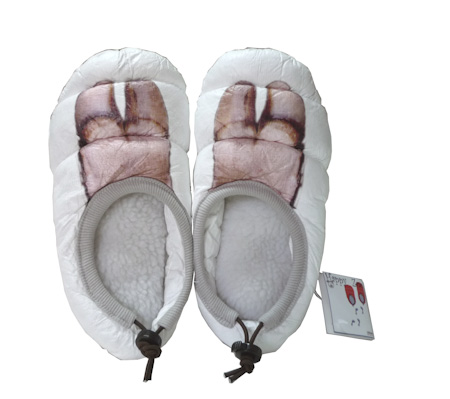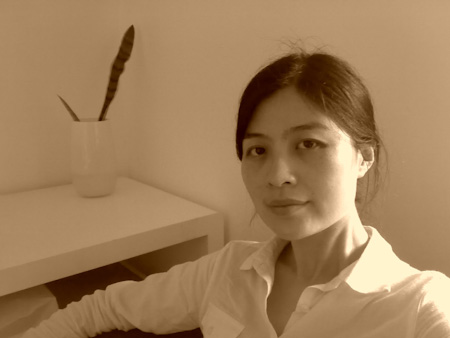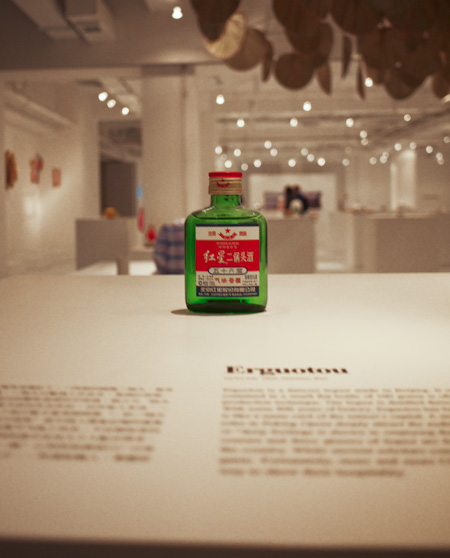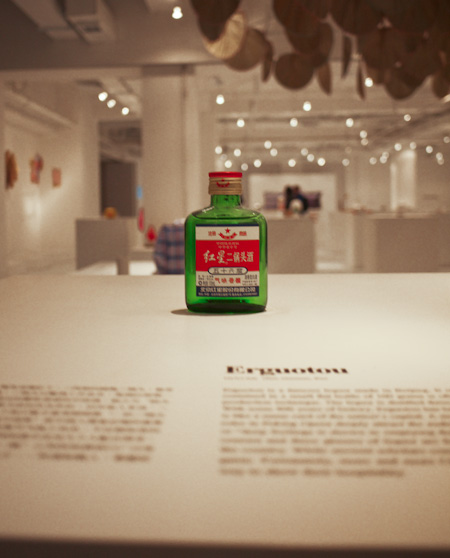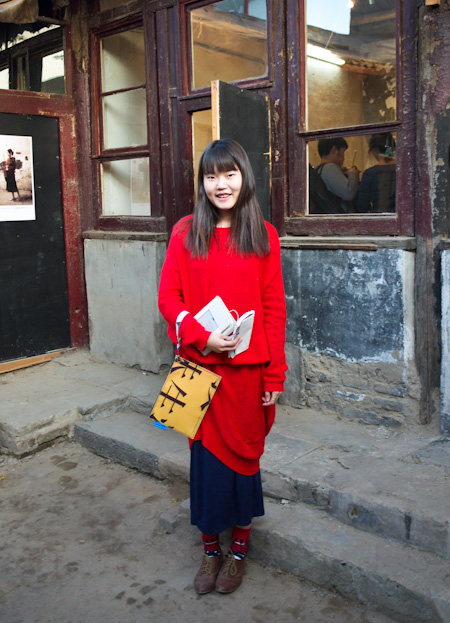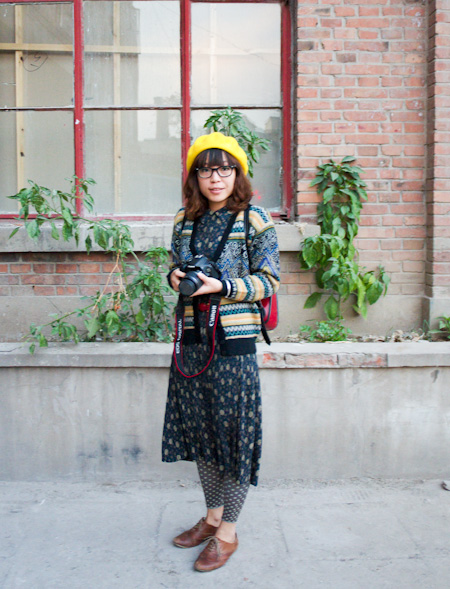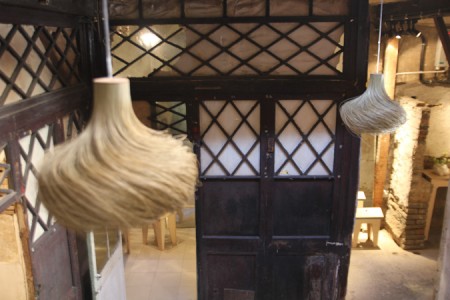At the Xander Zhou show, gray might be the new blond.
Author: stylites
Xander Zhou
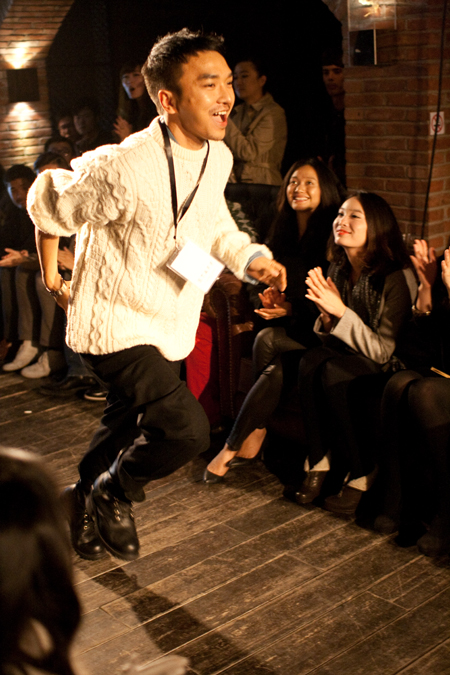
Photo: Suzy
Xander Zhou. What comes to mind? A young, partying, larger-than-life sort of designer who gets a great deal of publicity. Fashion events and bottles of champagne. The cover photo of the October 2010 “Gay China” issue of Hong Huang’s Ilook Magazine. For me, the main memory is of that time I bumped into him on the streets of Paris.
In short, the hype around the man sometimes overshadows his fashion collections. He may be young and not too many retail points actually carry his brands, but Xander Zhou is already a big name in China fashion – especially for foreigners watching this space. Often, he is the only Mainland fashion designer that people from outside of Beijing have even heard of.
Due to scheduling conflicts, I had not actually been to one of his shows before and had only had the opportunity to see his creations hanging in BNC and on the man himself on one of the countless parties that we both attended. Given how much he seems to be out and the time he must take being interviewed by fashion magazines, I was not sure how he ever had time to design.
We will have more on his show last night later this week.
Another Design Student
At the Joyce Opening
Hong Kong brand Joyce just opened its biggest store yet in the mall at the Summit Wing of the Beijing’s World Trade Center.
In the crowd of revelers was Jian Cui, who has transferred out of magazines and into online fashion retail.
On the Steps
China’s Top Model
The Wealthiest Town on Earth
Some readers have commented that my posts of Beijing street fashion have been less frequent in recent months. Thanks to my valued collaborator in this blog, Suzy, this hasn’t brought down the number of photos appearing here by too much.
In fact, these days I spend a good portion of my time outside of Beijing and am often outside of China as well. A recent trip that I found particularly interesting was to Huaxi, in Jiangsu province. Huaxi was celebrating its 50th anniversary as a village and invited over ten-thousand people for the party.
Here is a night view from my room of the “village”. This is how I imagined Chinese cities would look when I was little.
Huaxi even bosts its own version of Tiananmen. They did not reproduce the portrait of Chairman Mao. I suggested to several locals that the architect of the Huaxi dream, Wu Renbao, ought to be on the village’s Tiananmen.
Site Problems
Thank you for your patience!
It seems the various problems have been worked out and we can go back to regular programming. Thank a lot to Suzy and Will Moyer for figuring things out.
Army Green
Stage Center
Product Designer: Huang Ying
An interview that was included in my article “Designing China” in the September 2011 issue of Surface Asia:
1. What is the scale of production for your designs?
My items are all produced on a small-scale aside from the slippers. We make about a few thousand a year.
2. What are the main challenges for you?
Often, our volumes of materials and manufactured items are too low, so producers are reluctant to work with us. Copyright might become another issue.
3. What are the influences on your porcelain-wear?
The translucent spots called “Ling Long” originate in Jingdezhen, China’s traditional porcelain production capital. I altered the rice shape of the “Ling Long” to a square and applied it to a modern bowl. My vases are based on the concept of multi-function and re-combination. They can be separated into different parts.
4. Why did you seek to put landscapes on coffee tables (top photo) and what type of landscapes are they?
In traditional China, the ideal life was living in nature by mountains and water. Houses centered around a garden with stones and plants built on a limited scale to symbolize Nature. Nowadays, we live faraway even from these small gardens. Space is limited especially in such dense cities as Shanghai. My landscape tables have an organic shape and with the help of a gardener Lu Yuxin, who studied miniascape making in Japan, I tried to built quiet environments with the small lichen ball and plant as the symbol of the mountain and forest.
Graduating from the College of Architecture and Urban Planning of Tongji University in 1990, Huang Ying has worked in fashion, interior design and marketing for multinationals. She co-founded home accessory company, Isting, in 2000.
Go See Chinese Stuff!
I’ve used to travel everywhere with a bottle like that.
Beijing Design Week might be over, but Chinese Stuff, a compendium of quintessentially local objects that designers Lyndon Neri and Tom Dixon and I call a must-see is on for two more days. Hurry over to the new LD Design Center, just east of the Zhangzizhonglu subway station, on the south side of the street (No.94 Dongsishitiao Street).
The Shoemaker
This young design student teamed up with Triple-Major to create some very elaborate buxie that take off on tradition.
City Weekend has more on the highlights of Design Week.
A Real Dashilar Resident
“Real” only in the sense that she actually lives there now. This young lady who goes by the name Moon-D on Weibo is neither a typical nor a long-term resident of Dashilar. Only in Beijing for about two years, she moved into the historic neighborhood a few months ago, attracted by the central location, vert low rent (around USD 100 a month – though her place lacks a private bathroom and kitchen), and attractive environment. Part of a rock band, she describes herself as one of the few “artsy” people living in the area. She also says Design Week was probably the first hip, cultural event to take place there.
This Afternoon: Head to Dashilar
Today (9/24) is filled with openings and parties related to Beijing Design Week. These events will center around the revitalized hutongs around Dashilar, nearby Qianmen (click “more” to see a map). The moment symbolizes China’s graduation from mere manufacturer to creator of original products. According to the Design Week Creative Director Aric Chen, the week will do far more than showcase designers and their work, but will also catalyse overall development of design for China and inspire a revitalization of neighborhoods within Beijing. More information on Design Week and Dashilar here.
One part of that might come in the form of the pop-up shops a number of local shops are opening in the Dashilar area. Beijing’s answer to Colette, Wuhao, will be opening its pop-up, called the Teahouse, from 2pm today.
